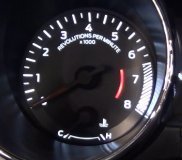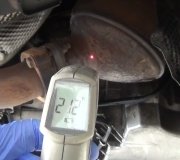I was driving my '98 Continental the other day when all of a sudden the EATC, turn signals, door locks, & power windows all cease to function. The only oddites that caught my attention were: A clicking noise could be heard especially when bringing the vehicle to a stop. When I did stop, the items mentioned would once again begin to work. If I accelerated, then all functions would cease working.
With the voltmeter connected, the battery reads 12.3 volts.I needed to add some distilled water to the battery as it was low in several cells. My battery charger showed that the battery was fully charged. The battery is an 84 month battery with 69 months of usgae. The only other issue that I have noticed over the past 6 months is that a 'check right front turn signal' message will appear on the display periodically.I changed the bulb and the message disappeared for several months, but then returned. This occurred prior to experiencing any of the issues that I mentioned above.
Could this be a faulty fuse or relay causing this havoc? Could it come down to the battery needing replaced?
Please offer any advice that you can.I appreciate your help!
Regards,
Mike
Wednesday, May 22nd, 2013 AT 8:25 PM


